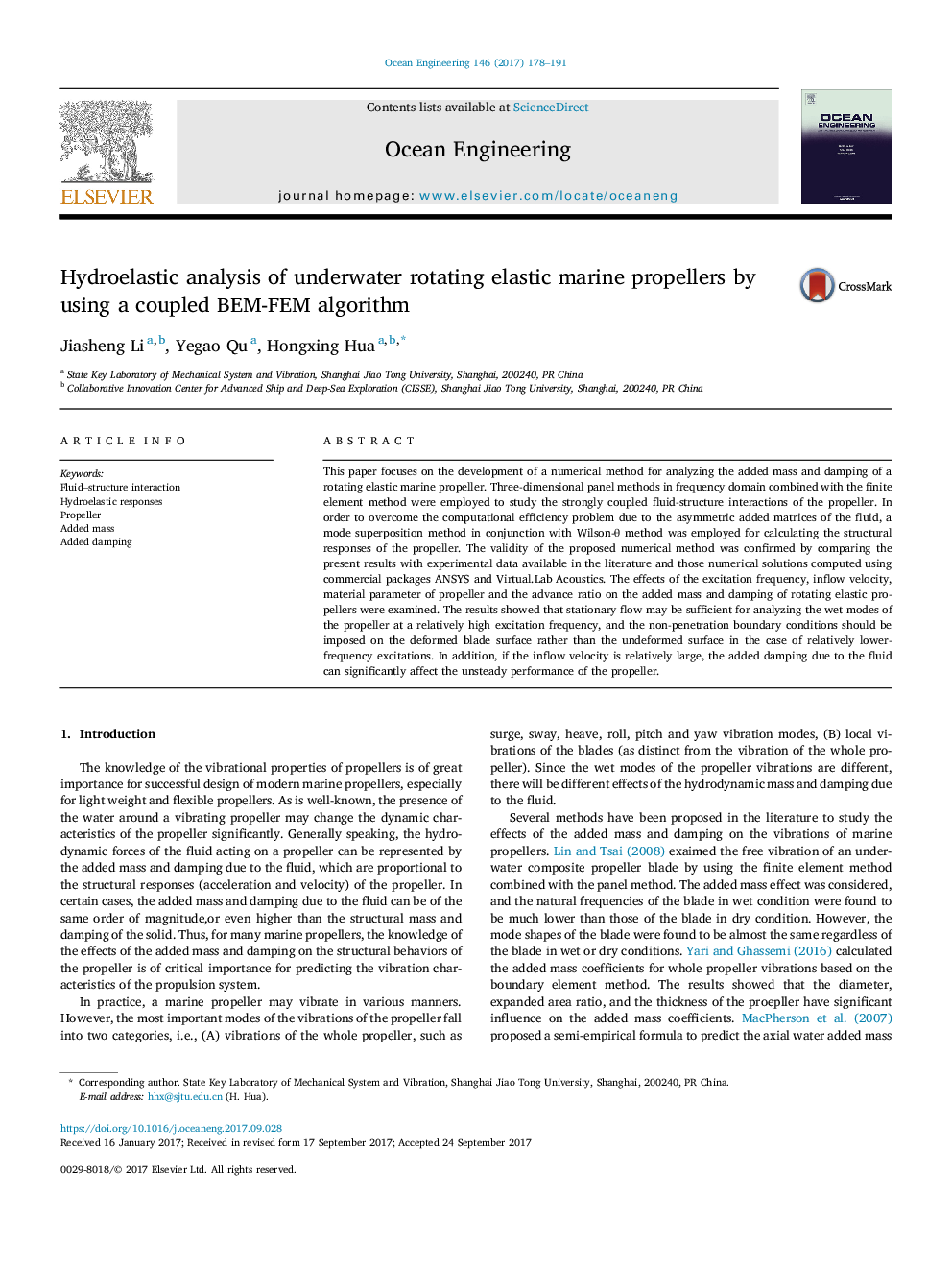| Article ID | Journal | Published Year | Pages | File Type |
|---|---|---|---|---|
| 5474062 | Ocean Engineering | 2017 | 14 Pages |
Abstract
This paper focuses on the development of a numerical method for analyzing the added mass and damping of a rotating elastic marine propeller. Three-dimensional panel methods in frequency domain combined with the finite element method were employed to study the strongly coupled fluid-structure interactions of the propeller. In order to overcome the computational efficiency problem due to the asymmetric added matrices of the fluid, a mode superposition method in conjunction with Wilson-θ method was employed for calculating the structural responses of the propeller. The validity of the proposed numerical method was confirmed by comparing the present results with experimental data available in the literature and those numerical solutions computed using commercial packages ANSYS and Virtual.Lab Acoustics. The effects of the excitation frequency, inflow velocity, material parameter of propeller and the advance ratio on the added mass and damping of rotating elastic propellers were examined. The results showed that stationary flow may be sufficient for analyzing the wet modes of the propeller at a relatively high excitation frequency, and the non-penetration boundary conditions should be imposed on the deformed blade surface rather than the undeformed surface in the case of relatively lower-frequency excitations. In addition, if the inflow velocity is relatively large, the added damping due to the fluid can significantly affect the unsteady performance of the propeller.
Related Topics
Physical Sciences and Engineering
Engineering
Ocean Engineering
Authors
Jiasheng Li, Yegao Qu, Hongxing Hua,
